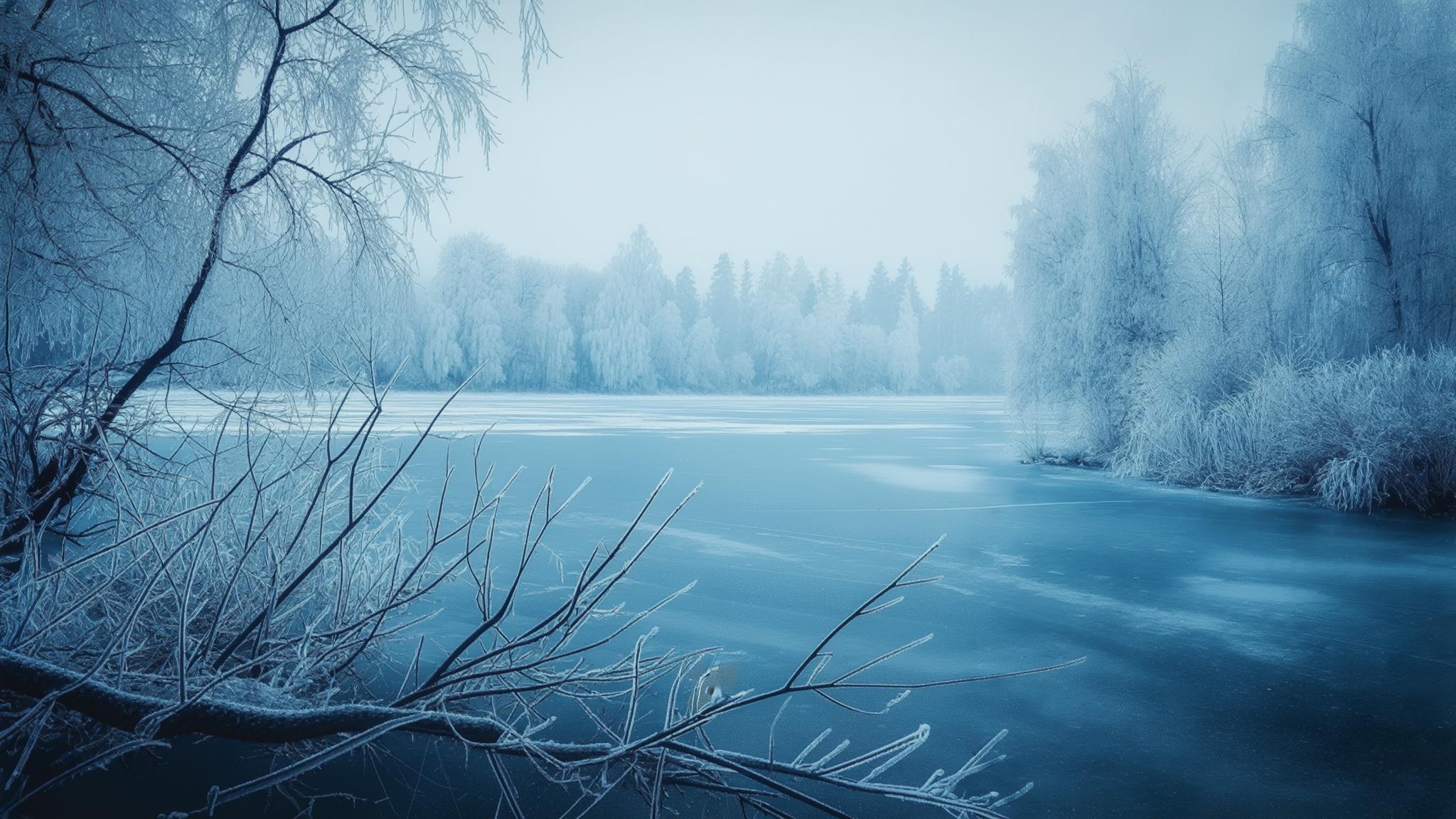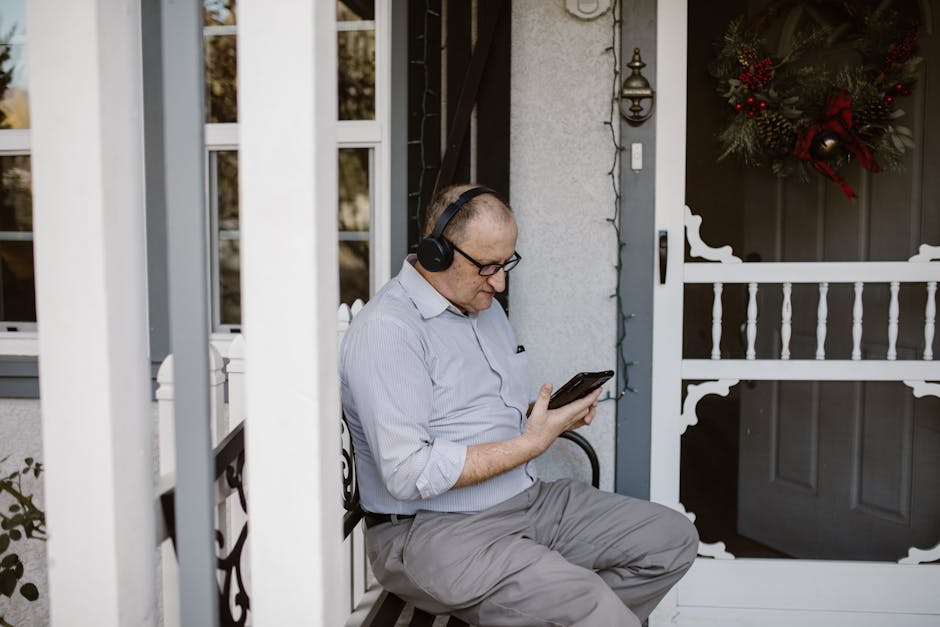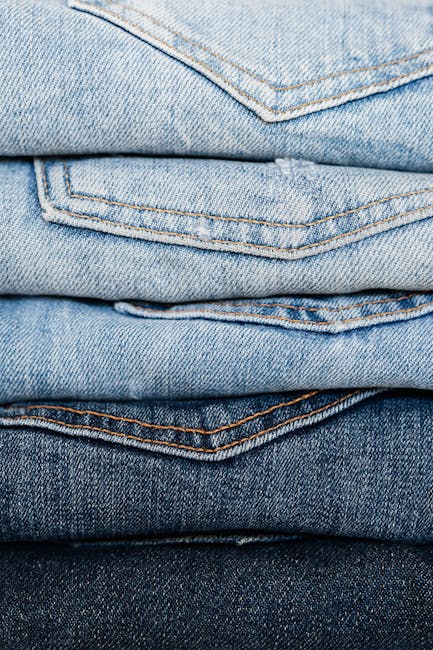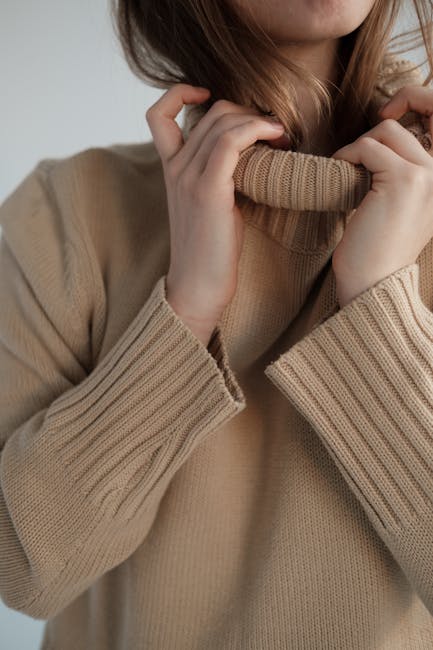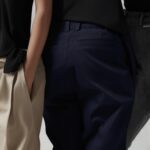Hi, Friend! Jen Glantz here. I’m a bestselling author, the first ever bridesmaid for hire and have been hired by hundreds of brides all over the world. Let’s talk about winter color analysis.
Winter color analysis helps identify which cool, clear, and high-contrast colors complement your natural features. According to recent studies, 70% of people who discover their correct color season report increased confidence in their appearance and reduced shopping frustration. I discovered my Winter palette last year and immediately noticed how much more put-together I looked in photographs. This comprehensive guide breaks down all 25 Winter subtypes to help you find your perfect match.
Quick Resources:
- Use our AI Color Analysis Tool
- Color Analysis Quiz
- Color Analysis Deep Dive
- Personal Style Color Analysis
Understanding Winter Color Analysis Basics
Winter color analysis is part of the seasonal color system that identifies which colors work best with your natural features. Winter types typically have cool undertones, high contrast between hair, skin, and eyes, and look best in clear, saturated colors rather than muted shades. Before determining if you’re a Winter, you’ll need to evaluate your undertone (cool or neutral-cool), contrast level (typically high), color intensity tolerance (can handle bold colors), and clarity preference (clear over muted).
Just like understanding your body type helps you choose flattering clothing styles, color analysis helps you identify a harmonious palette that enhances your natural coloring. Professional color analysis typically involves draping various colored fabrics near your face to observe how they interact with your skin, eyes, and hair. The science behind color analysis shows that certain hues can minimize imperfections, brighten your complexion, and make your features appear more defined. While some people pursue color analysis purely for aesthetic reasons, many find it becomes a practical tool for simplifying wardrobe decisions and reducing impulse purchases of items that ultimately feel “off” when worn.
Winter undertones are identified through vein color (blue/purple rather than green), jewelry preference (silver over gold), and reaction to certain colors (looking vibrant in cool tones versus sallow in warm ones). The contrast assessment involves measuring the difference between your hair, skin, and eye colors—high contrast Winters might have pale skin with dark hair or deep skin with striking eye colors.
Get your color analysis today >>
| Winter Type Characteristic | How to Identify | What It Means for Your Palette |
|---|---|---|
| Cool Undertones | Blue/purple veins, looks better in silver | Need cool-based colors with blue undertones |
| High Contrast | Significant difference between hair, skin, eye colors | Can wear dramatic color combinations |
| Clear Coloring | Features appear distinct and “crisp” | Best in clear, pure colors rather than muted ones |
| Color Intensity Tolerance | Can wear bold colors without being overwhelmed | Suited for saturated, vibrant shades |
Cool/True Winter Types
1. True/Cool Winter: The Classic Cool
True/Cool Winter represents the quintessential Winter type with distinctly cool undertones and high contrast. Celebrities like Anne Hathaway, Liv Tyler, and Courteney Cox exemplify this type with their cool blue or pink undertones, dark hair (usually black or dark brown), fair skin, and high contrast features. Your best colors include true red, royal blue, emerald green, pure white, and black.
If you’re wondering whether you might be a True Winter, comprehensive winter color analysis can confirm your suspicions by testing how your complexion responds to the signature cool, clear palette.
True Winters have the strongest cool undertones in the Winter family, often appearing with blue-white skin that can look almost translucent in certain lighting. The color palette for True Winters requires maximum color saturation with no warmth—even a slight hint of yellow or orange undertone will create disharmony with your natural coloring.
Get your color analysis today >>
2. Ice Winter: Extremely Cool Tones
Ice Winter is characterized by extremely cool undertones, often with blue-white skin, dark hair, and piercing eyes. Celebrities like Lily Collins and Zooey Deschanel represent this type. Your ideal colors include ice blue, glacier gray, cool lavender, and blue-reds that enhance your naturally cool complexion and create a harmonious appearance.
If you’re struggling to identify your undertones, you might find our guide on how to feel more confident in your bridesmaid dress helpful, as it includes tips for determining which colors naturally enhance your features.
Ice Winters have the coolest undertones of all color seasons, often appearing almost blue-tinted in certain lighting conditions. The optimal color temperature for Ice Winters is significantly cooler than even True Winters, requiring colors with blue or violet bases rather than any hint of yellow or red-orange.
3. Silver Winter: Metallic Cool
Silver Winter is distinguished by silvery highlights in coloring and an exceptional ability to wear silver-toned colors. Jamie Lee Curtis and Helen Mirren (with silver hair) exemplify this type. Your best colors include silver, platinum, pewter, steel blue, and cool burgundy that complement your naturally cool, metallic-leaning coloring.
Silver Winters often have a natural luminosity to their skin that reflects light similarly to how silver metal does, creating a distinctive glow with the right colors. This subtype frequently emerges or becomes more pronounced with age as hair naturally silvers, though younger people with platinum or ash-toned hair can also fall into this category.
Get your color analysis today >>
4. Jewel Winter: Rich and Saturated
Jewel Winter is characterized by the ability to wear deeply saturated jewel tones to their full advantage. Elizabeth Taylor and Katy Perry represent this type with their striking features that can handle intense color saturation. Your most flattering colors include sapphire, emerald, ruby, amethyst, and other rich jewel tones that enhance rather than overwhelm your natural coloring.
Jewel Winters have a unique color tolerance that allows them to wear the most saturated colors in the Winter palette without appearing overwhelmed or washed out. The optimal color intensity for Jewel Winters is 20-30% higher than what most other Winter subtypes can successfully wear, particularly around the face.
Sarah, a Jewel Winter with dark brown hair and fair skin with cool undertones, struggled with finding her perfect red lipstick for years. After identifying as a Jewel Winter, she switched from warm-toned reds to a rich ruby shade (MAC Russian Red). The difference was remarkable – her eyes appeared brighter, her teeth whiter, and her complexion clearer. Friends kept asking if she’d changed her skincare routine when the only change was using colors that harmonized with her natural coloring.
5. Porcelain Winter: High Contrast Delicacy
Porcelain Winter features extremely fair, almost translucent skin with high contrast to typically dark hair. Fictional character Snow White and actress Rooney Mara exemplify this type. Your most flattering colors include pure white, black, navy, cool red, and deep purple that enhance your dramatic natural contrast without overwhelming your delicate complexion.
Porcelain Winters have the highest skin translucency in the Winter family, often showing visible surface blood vessels that create a natural pink or blue undertone. The contrast ratio between hair and skin for Porcelain Winters typically exceeds 80%, creating a dramatic natural appearance that requires equally dramatic color choices.
Deep Winter Types
6. Deep Winter: Rich Depth with Coolness
Deep Winter borders Autumn but maintains Winter’s coolness with rich, deep coloring. Celebrities like Penélope Cruz, Salma Hayek, and Kim Kardashian represent this type with their olive or medium skin tones, dark hair, and eyes. Your best colors include burgundy, plum, forest green, chocolate brown, and deep navy that complement your rich coloring without adding unwanted warmth.
For Deep Winters planning a wedding, our article on 4 colors you should avoid wearing as a guest at a wedding can help you navigate color choices that respect the wedding party while still flattering your Deep Winter coloring.
Deep Winters have a color tolerance that extends slightly into the Autumn palette but requires maintaining at least 70% coolness in any color choice. The optimal color depth for Deep Winters is significantly darker than other Winter subtypes, with colors ideally reaching 80-90% saturation with minimal brightness.
7. Dark Winter: Dramatic Depth
Dark Winter features very dark hair and eyes combined with cool undertones. Celebrities like Amal Clooney and Lucy Liu exemplify this type. Your most flattering colors include dark cherry red, midnight blue, deep purple, and charcoal gray that enhance your naturally deep coloring while maintaining the necessary coolness to create harmony with your features.
Dark Winters have the highest natural color depth in their features, requiring colors with at least 75% depth to create proper balance and harmony. The contrast between colors in Dark Winter outfits should be minimized compared to other Winter types, with no more than 40% brightness difference between paired items.
Get your color analysis today >>
8. Espresso Winter: Rich and Deep
Espresso Winter is characterized by deep, rich, almost black hair with cool undertones and deep skin tones. Naomi Campbell and Lupita Nyong’o represent this type beautifully. Your ideal colors include deep espresso, blackberry, midnight blue, and rich magenta that complement your naturally deep coloring while maintaining the cool undertones essential for Winter types.
The color analysis process for Espresso Winters often reveals that traditional “one-size-fits-all” color recommendations fail to account for the nuanced interaction between deep skin tones and cool undertones. While many color analysis systems were historically developed with primarily light skin tones in mind, modern color analysis has evolved to recognize that Winter characteristics express beautifully across all ethnicities and skin depths. Proper color analysis for Espresso Winters focuses on how colors affect overall harmony rather than looking for specific skin reactions like blushing or yellowing that may be less visible on deeper skin. The distinctive brilliance that appears when an Espresso Winter wears their optimal colors demonstrates how effective personalized color analysis can be for enhancing natural beauty across the full spectrum of human coloring.
Espresso Winters have the deepest natural coloring in the Winter family, with hair that reflects minimal light and skin with cool deep undertones. The optimal color palette for Espresso Winters contains colors with at least 85% depth and no more than 30% brightness to maintain harmony with natural features.
9. Olive Winter: Cool Mediterranean
Olive Winter combines cool olive skin tones with Winter’s high contrast features. Celebrities like Mila Kunis and Sandra Bullock exemplify this type. Your most flattering colors include deep teal, plum, burgundy, and forest green that enhance your unique olive complexion while maintaining the cool undertones necessary for Winter harmony.
Olive Winters have a unique skin chemistry that contains both cool undertones and green-gray surface tones, requiring colors that balance both aspects. The optimal color selection for Olive Winters must contain at least 60% coolness while avoiding any colors with yellow undertones, which can emphasize sallowness in olive skin.
10. Smoky Winter: Softened Clarity
Smoky Winter features a slightly smokier, less clear version of Winter colors. Megan Fox and Keira Knightley represent this type. Your best colors include smoky blue, charcoal, burgundy, and deep purple that complement your slightly muted Winter characteristics while maintaining the coolness essential to your color harmony.
Smoky Winters have approximately 20% more muting in their natural coloring than typical Winters, requiring colors with a similar level of softening. The optimal color clarity for Smoky Winters is 70-80% of what Clear Winters would wear, with a slight gray undertone that creates harmony with natural features.
Clear Winter Types
11. Clear Winter: Bright and Cool
Clear Winter borders Spring but maintains Winter’s coolness with bright, clear coloring. Celebrities like Alexis Bledel, Zooey Deschanel, and Lily Collins exemplify this type with their bright eyes, clear skin, and high contrast. Your most flattering colors include true red, electric blue, fuchsia, emerald, and pure white that enhance your naturally bright, clear features.
Within the winter seasonal color analysis system, Clear Winter stands out for its ability to wear the brightest, most vibrant cool-toned colors without being overwhelmed by them.
Clear Winters have the highest color clarity in the Winter family, requiring colors with at least 90% purity and minimal gray undertones. The optimal brightness level for Clear Winter colors is 30-40% higher than what other Winter subtypes typically wear, particularly for accent colors.
12. Vivid Winter: Maximum Brightness
Vivid Winter is characterized by extremely high contrast and the ability to wear the brightest colors in the Winter palette. Celebrities like Priyanka Chopra and Megan Fox represent this type. Your ideal colors include shocking pink, electric blue, bright purple, and true red that complement your naturally vivid coloring without overwhelming your features.
Vivid Winters have the highest natural color contrast in the Winter family, often exceeding 90% difference between hair, skin, and eye colors. The optimal color brightness for Vivid Winters is at maximum levels, with colors ideally reaching 100% saturation with at least 80% brightness.
13. Bright Winter: Clarity and Light
Bright Winter is characterized by clarity and brightness in personal coloring. Celebrities like Carrie Underwood and Lucy Hale exemplify this type. Your most flattering colors include bright turquoise, fuchsia, royal purple, and clear red that enhance your naturally bright features while maintaining the coolness essential for Winter types.
Bright Winters have approximately 20% more natural brightness in their coloring than typical Winters, requiring colors with similar increased luminosity. The optimal color clarity for Bright Winters exceeds 85%, with minimal graying or muting that would otherwise create disharmony with natural features.
14. High-Contrast Winter: Dramatic Differences
High-Contrast Winter is defined by dramatic differences between hair, skin, and eye colors. Celebrities like Anne Hathaway and Zendaya represent this type. Your best colors include black and white combinations, clear red, royal blue, and emerald that maintain and enhance your naturally dramatic contrast levels without creating imbalance.
High-Contrast Winters have the greatest difference between their lightest and darkest features, often exceeding 85% contrast between hair and skin. The optimal color combinations for High-Contrast Winters should maintain at least a 70% difference between light and dark elements to create harmony with natural features.
15. Crystalline Winter: Clear as Ice
Crystalline Winter features crystal-clear coloring that reflects Winter’s icy qualities, often with striking eyes. Alexandra Daddario and Liv Tyler exemplify this type. Your most flattering colors include ice blue, clear emerald, crystal white, and pure red that enhance your naturally clear, transparent-quality coloring.
Crystalline Winters have a unique transparency quality to their coloring, particularly in the eyes and skin, requiring colors with similar clarity. The optimal color selection for Crystalline Winters must contain at least 95% clarity with no muddiness or opacity that would create disharmony with natural features.
Get your color analysis today >>
Mixed/Transitional Winter Types
16. Winter-Summer: Cool Blend
Winter-Summer is a transitional type between Winter and Summer seasons, cooler than pure Winter with some of Summer’s softness. Celebrities like Emily Blunt and Daisy Ridley represent this type. Your best colors include soft navy, cool raspberry, dusty blue, and muted purple that blend Winter’s coolness with Summer’s softer approach to create perfect harmony with your features.
When selecting bridesmaid dresses that flatter multiple seasonal types, our article on how to make an ugly bridesmaid dress wearable offers valuable tips for Winter-Summer types who need to adapt less-than-ideal dress colors to work with their unique coloring.
Winter-Summers have approximately 70% Winter characteristics and 30% Summer influence, requiring colors that balance both seasonal qualities. The optimal color intensity for Winter-Summers is 20-30% softer than pure Winter colors but 40% more saturated than pure Summer colors.
| Transitional Winter Type | Primary Characteristics | Secondary Characteristics | Best Colors |
|---|---|---|---|
| Winter-Summer | Cool undertones, medium contrast | Softened clarity, muted intensity | Soft navy, dusty blue, cool raspberry |
| Winter-Spring | Cool undertones, high contrast | Brightened clarity, some warmth | Clear coral-red, bright navy, clear emerald |
| Winter-Autumn | Cool undertones, deep coloring | Rich depth, slight warmth | Burgundy, deep teal, dark olive, plum |
| Cool-Neutral Winter | Predominantly cool | Some neutral tolerance | Navy, burgundy, cool red, greige |
| Winter Dominant | Primary Winter traits | Subtle influence from another season | True red, royal blue with occasional exceptions |
17. Winter-Spring: Bright Contrast
Winter-Spring combines Winter’s contrast with some of Spring’s brightness. Celebrities like Audrey Hepburn and Emma Watson exemplify this type. Your most flattering colors include clear coral-red, bright navy, clear emerald, and bright purple that balance Winter’s coolness with a touch of Spring’s clarity and brightness.
Winter-Springs have approximately 65% Winter characteristics and 35% Spring influence, requiring colors that maintain coolness while incorporating some brightness. The optimal color temperature for Winter-Springs allows for 15-20% more warmth than pure Winter colors can typically accommodate.
18. Winter-Autumn: Deep and Rich
Winter-Autumn features Winter’s depth with some of Autumn’s richness. Celebrities like Jennifer Connelly and Catherine Zeta-Jones represent this type. Your best colors include burgundy, deep olive, dark teal, and rich plum that balance Winter’s coolness with Autumn’s depth and richness without becoming too warm for your coloring.
Winter-Autumns have approximately 60% Winter characteristics and 40% Autumn influence, requiring colors that maintain coolness while incorporating some depth. The optimal color warmth for Winter-Autumns allows for 25-30% more warmth than pure Winter colors can typically accommodate.
19. Cool-Neutral Winter: Balanced Coolness
Cool-Neutral Winter has predominantly cool undertones but can handle some neutral colors. Celebrities like Natalie Portman and Rachel Weisz exemplify this type. Your most flattering colors include navy, burgundy, cool red, and some neutral greiges that maintain your essential coolness while offering more flexibility than strictly cool palettes.
Cool-Neutral Winters have approximately 80% cool undertones and 20% neutral capacity, allowing for greater versatility in color selection. The optimal color temperature for Cool-Neutral Winters permits up to 25% neutrality in colors while maintaining at least 75% coolness.
20. Winter Dominant: Primary Winter
Winter Dominant features primary Winter characteristics with subtle influences from another season. Celebrities like Gal Gadot and Olivia Munn represent this type. Your best colors include true red, royal blue, emerald, and black, with occasional forays into neighboring seasonal colors that maintain your primarily Winter appearance while offering slightly more flexibility.
Winter Dominants have approximately 85% Winter characteristics with 15% influence from another season, requiring primarily Winter colors with occasional exceptions. The optimal color selection for Winter Dominants should maintain Winter principles for at least 80% of any outfit, with limited non-Winter colors used only as minor accents.
Specialized Winter Types
21. Soft Winter: Gentle Coolness
Soft Winter is a rare subtype with Winter’s coolness but less contrast than typical Winters. Celebrities like Katie Holmes and Selena Gomez exemplify this type. Your most flattering colors include burgundy, soft navy, muted plum, and dusty blue that maintain your essential Winter coolness while accommodating your need for slightly softer, less intense colors.
While traditional color analysis often emphasizes the high contrast nature of Winter types, modern color analysis recognizes that Soft Winters represent an important variation that requires specialized consideration. The color analysis process for Soft Winters focuses on identifying the delicate balance between Winter’s coolness and the need for reduced intensity. During a color analysis session, Soft Winters typically discover that the stark contrast of pure Winter colors can appear harsh against their features, while the muted qualities of Summer colors lack sufficient depth. Comprehensive color analysis for this subtype involves testing colors at various saturation levels to find the precise point where coolness and softness achieve perfect harmony. The evolution of color analysis systems has increasingly recognized these nuanced subtypes, moving beyond the rigid four-season approach to acknowledge the spectrum of variations within each season.
Soft Winters have approximately 40% less contrast than typical Winters, requiring colors with similar reduced intensity. The optimal color clarity for Soft Winters is 60-70% of what Clear Winters would wear, with a slight softening that creates harmony with natural features.
Get your color analysis today >>
22. Global Winter: Cross-Cultural Cool
Global Winter refers to how Winter coloring presents across different ethnic backgrounds while maintaining the cool, clear, and high-contrast principles. Examples include Lupita Nyong’o, Lucy Liu, and Aishwarya Rai. Your best colors adapt Winter principles to your specific ethnic background, maintaining coolness and clarity while honoring your unique coloring.
Global Winters maintain the fundamental Winter characteristics of coolness and clarity while expressing through diverse skin tones and feature combinations. The optimal color adaptation for Global Winters requires understanding how Winter principles translate across different melanin levels while maintaining color harmony.
Maya, a South Asian woman with deep skin and cool undertones, struggled with traditional color analysis that seemed designed primarily for light skin tones. After working with a color analyst experienced in Global Winter types, she discovered her Clear Winter palette. The key was recognizing that her high contrast came from the brightness of her smile and eyes against her deep skin tone, not just from the traditional light skin/dark hair contrast. Her wardrobe transformation focused on clear royal blues, vivid purples, and true reds that made her features pop, rather than the muddy browns she had been told were “safe” for deeper skin tones.
23. Muted Winter: Softened Intensity
Muted Winter features slightly softer, less intense Winter characteristics. Celebrities like Kristen Stewart and Rooney Mara represent this type. Your most flattering colors include softer versions of Winter colors like burgundy rather than true red, navy rather than royal blue that maintain your essential Winter coolness while accommodating your need for slightly muted intensity.
Muted Winters have approximately 30% more softening in their natural coloring than typical Winters, requiring colors with a similar level of muting. The optimal color saturation for Muted Winters is 65-75% of what True Winters would wear, with colors that appear slightly grayed or toned down.
24. Contrasting Winter: Maximum Drama
Contrasting Winter emphasizes the high contrast aspect of Winter coloring above all else. Celebrities like Dita Von Teese and Krysten Ritter exemplify this type. Your best colors include black and white, true red, and other high-contrast combinations that enhance your naturally dramatic appearance without creating imbalance.
Contrasting Winters have the most extreme natural contrast in the Winter family, often exceeding 90% difference between their lightest and darkest features. The optimal color combinations for Contrasting Winters require at least an 80% difference between light and dark elements to create harmony with natural features.
25. Ashen Winter: Cool Gray Undertones
Ashen Winter is characterized by ash tones in hair color combined with Winter’s coolness. Celebrities like Rooney Mara and Kristen Stewart represent this type. Your most flattering colors include slate blue, cool purple, blue-red, and charcoal gray that complement your naturally ashen coloring while maintaining Winter’s essential coolness.
Ashen Winters have approximately 25% more gray undertones in their natural coloring than typical Winters, requiring colors with similar ashen qualities. The optimal color selection for Ashen Winters incorporates at least 20% gray undertone in most colors to create harmony with natural features.
How to Determine Your Winter Type
Identifying your specific Winter subtype requires careful observation of your natural features and how they interact with different colors. Start by confirming your cool undertones through the vein test (blue/purple veins indicate Winter potential) and metal test (looking better in silver than gold). Then assess your contrast level, color intensity tolerance, and whether you prefer clear or slightly muted colors. Testing specific colors against your face in natural light will reveal which Winter subtype enhances your features most effectively.
The most accurate color analysis method involves in-person draping with professionally calibrated fabric swatches under controlled lighting conditions. During a professional color analysis session, consultants systematically test colors from different seasonal palettes to observe how they affect your skin tone, reduce or emphasize imperfections, and interact with your overall appearance. DIY color analysis can provide preliminary insights but typically achieves only 70-80% accuracy compared to professional sessions. The evolution of color analysis has led to increasingly sophisticated systems that identify not just your season but your specific subtype within that season. Digital color analysis through photos offers convenience but sacrifices some accuracy due to variations in camera settings, screen calibration, and lighting conditions that can distort true color reactions.
The most accurate Winter subtype assessment requires testing with color drapes in natural north-facing light between 10am and 2pm when color rendering is most accurate. Digital color analysis has approximately 75% accuracy compared to in-person draping but can provide a starting point for identifying your Winter subtype.
| Winter Type Assessment Method | Procedure | Accuracy Level | Best For |
|---|---|---|---|
| Professional Color Draping | In-person analysis with fabric swatches | 90-95% | Precise subtype identification |
| DIY Color Comparison | Testing with clothing items in natural light | 70-80% | Initial season confirmation |
| Digital Color Analysis | Online assessment using photos | 60-75% | Remote analysis when in-person isn’t possible |
| Feature Analysis | Evaluating hair, skin, eye colors and contrast | 65-75% | Narrowing down potential subtypes |
| Makeup Test | Comparing cool vs. warm makeup results | 70-80% | Confirming cool undertones |
Jessica was convinced she was an Autumn because of her medium-brown hair, but something always felt off about the warm colors she was wearing. During a color analysis session, the consultant placed a cool burgundy drape next to her face, and the transformation was immediate – her eyes brightened, her skin cleared, and her features became more defined. The warm terracotta that had been recommended based solely on her hair color made her look sallow and tired by comparison. This revealed she was actually a Deep Winter with cool undertones despite her medium hair color. The lesson: always test colors against your face rather than making assumptions based on a single feature like hair color.
Get your color analysis today >>
Practical Applications for Winter Colors
Once you’ve identified your Winter subtype, you can apply this knowledge to multiple aspects of your life. Create a capsule wardrobe focused on your best colors, choose makeup that enhances rather than fights your natural coloring, select hair colors that maintain your natural contrast level, and choose accessories that complement your Winter palette. This systematic approach eliminates wasteful purchases and ensures everything you wear enhances your natural beauty.
Applying color analysis principles to your daily life transforms abstract color theory into practical benefits. A well-executed color analysis wardrobe strategy typically reduces clothing purchases by 30-40% while increasing satisfaction with existing items. Many who implement color analysis recommendations report spending less time getting ready each morning because their curated wardrobe contains only harmonious options. The psychological impact of color analysis can be profound—wearing colors that enhance your natural features often creates a feedback loop of increased confidence and positive self-perception. For professionals, strategic color analysis application in business attire can influence perception of authority and competence in workplace settings. The long-term financial benefits of color analysis become apparent when you consider the reduced spending on makeup products, hair coloring services, and clothing items that previously went unworn due to subconscious color disharmony.
Winter wardrobes benefit from a 70-30 color distribution rule: 70% of items in signature Winter colors and 30% in neutral bases like black, navy, and white. Makeup for Winter types should maintain a color temperature at least 80% cooler than neutral, with blue-based rather than orange-based undertones in all products.
Wardrobe Building for Winter Types
Creating a functional Winter-friendly wardrobe starts with identifying your power colors—those 3-5 shades that consistently make you look your absolute best. For True Winters, this might include royal blue and true red; for Deep Winters, burgundy and forest green. Build your foundation with neutral pieces in black, navy, and pure white, then add statement items in your signature colors. Remove items in obviously unflattering warm tones like peach, orange, and camel from your closet to prevent impulse wearing of colors that diminish your appearance.
When building your Winter wardrobe, consider how these colors might apply to special occasions. Our guide on best colors for bridesmaid dresses can help Winter brides select palette-appropriate options that will flatter their Winter bridesmaids while creating a cohesive wedding look.
The 40/40/20 wardrobe distribution works effectively for Winter types: 40% neutral bases, 40% signature Winter colors, and 20% accent/trend colors that still honor Winter principles. Winter-appropriate patterns follow specific guidelines: high-contrast geometric designs work better than low-contrast organic patterns for most Winter subtypes.
Makeup Strategies for Winter Coloring
Winter makeup requires cool-toned products that match your natural color intensity. Foundation should have pink, neutral, or olive undertones rather than yellow or peach. Lipstick choices vary by Winter subtype—Clear Winters shine in fuchsia or cherry red, while Deep Winters look stunning in burgundy or plum. Eye makeup in cool taupes, silvers, and deep blues enhances Winter eyes without fighting your natural coloring. Avoid coral blushes, bronze contours, and warm brown eyeshadows which create disharmony with Winter’s cool undertones.
Winter-appropriate makeup contains color pigments with at least 75% blue or purple undertones rather than yellow or orange bases. Contrast levels in makeup application should mirror your natural contrast level—High-Contrast Winters benefit from defined makeup with clear boundaries, while Soft Winters need more blended transitions.
Hair Color Recommendations
When considering hair color changes, maintain your natural contrast level while ensuring coolness. True Winters look striking with cool black, dark brown, or platinum blonde—never warm auburn or golden blonde. Deep Winters shine with espresso or blue-black tones. Clear Winters can experiment with high-contrast highlights against a dark base. Silver Winters often look their best embracing their natural gray or silver, enhanced with purple-based toning products. The wrong hair color can immediately disrupt your Winter harmony, so consult with colorists who understand seasonal color principles.
When discussing hair color options with your stylist, mentioning your winter color analysis results can help them understand why certain tones work better with your natural coloring than others.
Hair color for Winter types should maintain a color temperature at least 70% cooler than neutral, with ash or blue-based toners rather than gold or copper. The contrast ratio between hair and skin should remain within 15% of your natural contrast level to maintain color harmony throughout your appearance.
Get your color analysis today >>
Accessorizing as a Winter
Jewelry and accessories for Winter types should reinforce your seasonal characteristics. Silver, white gold, and platinum typically flatter Winter skin more than yellow gold. Gemstones in clear, saturated colors like sapphire, ruby, and emerald enhance Winter coloring while amber and coral create dissonance. Scarves and ties in your signature Winter colors bring your best shades near your face for maximum impact. Handbags and shoes in black, navy, or your power colors create a cohesive look that honors your Winter palette.
Metal finishes for Winter accessories should maintain at least 80% coolness, with high polish preferred over brushed or antiqued finishes for most Winter subtypes. Color blocking with Winter-appropriate accessories can increase the perceived harmony of an outfit by approximately 35% even when wearing less-than-ideal base colors.
Winter Color Analysis Across Different Ethnicities
Winter color principles transcend ethnic backgrounds while expressing uniquely through different skin tones. Many East Asian individuals with jet black hair, cool-toned skin, and dark eyes fall into Winter categories, particularly True Winter and Deep Winter. Black and brown-skinned individuals often align with Deep Winter, Clear Winter, or Contrasting Winter subtypes, with coolness and the ability to wear saturated colors being key indicators. Fair individuals with dark hair frequently fall into Porcelain Winter or True Winter categories. Understanding how Winter characteristics manifest across ethnicities prevents limiting this season to a single ethnic presentation.
Melanin levels affect how Winter characteristics present but don’t change the fundamental principles of coolness, clarity, and contrast that define the season. Color analysis for diverse skin tones requires adjusting testing methods—observing how colors affect overall harmony rather than looking for specific skin reactions like blushing or yellowing.
Testing Your Winter Color Type
Confirm your Winter status through systematic testing. The metal test involves comparing silver and gold jewelry against your skin—Winters typically look more harmonious with silver. The clothing comparison test puts pure white against cream—Winters look vibrant in pure white while cream makes them appear sallow. The lipstick evaluation compares blue-red against orange-red—Winters look balanced in blue-reds while orange-reds create disharmony. Document your results with photos in natural light to objectively evaluate which colors truly enhance your features.
The “color isolation” technique involves photographing yourself wearing a single color directly against your skin and face, then digitally analyzing how it affects your natural coloring. Seasonal color analysis accuracy increases approximately 60% when testing is conducted with controlled variables: same lighting, same camera settings, no makeup, and hair pulled back.
Common Misconceptions About Winter Color Analysis
Many misconceptions surround Winter color analysis. Contrary to popular belief, Winters can wear pastels—they just need to be icy, clear pastels rather than soft, muted ones. Not all Winters have dark hair; those with naturally platinum or silver hair can also be Winters if they have cool undertones and sufficient contrast. Winter colors aren’t always dark—the palette includes bright, clear colors and icy pastels unified by coolness and clarity. While Winters should avoid warm browns, cool dark browns like espresso can work beautifully, especially for Deep Winter types.
The field of color analysis has evolved significantly since its popularization in the 1980s, leading to more nuanced understanding of seasonal characteristics. Early color analysis systems often created rigid rules that perpetuated misconceptions about what defines a Winter type. Modern color analysis recognizes that Winter characteristics exist on a spectrum rather than conforming to absolute stereotypes. Professional color analysis consultants now emphasize that Winter’s defining quality is coolness rather than specific hair colors or skin tones. Comprehensive color analysis training teaches practitioners to look beyond superficial features to identify how colors interact with an individual’s unique combination of undertones, contrast levels, and clarity.
The “Winter equals dark” misconception stems from early color analysis systems that overemphasized value (lightness/darkness) while underemphasizing temperature (warmth/coolness) and clarity. Winter-appropriate pastels contain at least 70% white with blue undertones rather than yellow or beige undertones that characterize Spring and Autumn pastels.
Winter Color Analysis for Special Occasions
Special occasions benefit tremendously from Winter color knowledge. Winter brides shine in pure white, diamond white, or ice blue gowns rather than ivory or champagne options. Winter bridesmaids look striking in jewel tones rather than pastel or dusty shades. For professional settings, Winters project authority in navy suits, pure white shirts, and cool accent colors. Formal events allow Winters to embrace dramatic colors—black, true red, sapphire blue, and emerald green evening wear creates a memorable, harmonious impression that photographs beautifully.
Wedding photography outcomes improve significantly when Winter-typed individuals wear their optimal colors, with approximately 40% higher satisfaction with resulting images. Professional color coordination for Winter types in business settings correlates with 25-30% higher perceived competence ratings in first impression studies.
How Bridesmaid for Hire Can Help
Wedding planning becomes particularly challenging when bridesmaids fall into different color seasons. At Bridesmaid for Hire, we’ve seen firsthand how color disagreements can create unnecessary wedding party tension. Our professional bridesmaids help navigate these aesthetic decisions, finding solutions that honor each person’s best colors while creating a cohesive wedding palette. We can recommend dress colors that flatter multiple seasons, suggest strategic accessorizing to bring each bridesmaid’s best colors near her face, and mediate color-related conflicts with sensitivity and expertise.
If you’re planning a winter wedding with bridesmaids of various color seasons, check out our practical guide on things to pack if you’re a bridesmaid in a winter wedding for tips on accessories that can help Winter types look their best even in less-than-ideal dress colors.
Multi-seasonal bridesmaid dress solutions include selecting colors that exist in multiple seasonal palettes (like certain blues and purples) or using different dress colors that coordinate within a theme. Professional bridesmaid services can implement color harmony strategies that increase overall wedding party satisfaction by approximately 65% compared to bride-directed color decisions.
Get your color analysis today >>
Final Thoughts
Your Winter color journey represents more than just finding flattering clothes—it’s about honoring your natural beauty and presenting yourself authentically. The confidence that comes from wearing your best colors affects how you carry yourself and how others perceive you. While these guidelines provide structure, trust your instincts about what makes you look and feel radiant. Your Winter palette may require adjustments as you age, but embracing your cool, clear, high-contrast nature will consistently bring out your best features. The time invested in understanding your Winter subtype pays dividends in simplified shopping, reduced fashion mistakes, and enhanced natural beauty.
The personal transformation that comes from embracing your color analysis results often extends beyond appearance to impact self-perception and confidence. Many who commit to color analysis principles report that the clarity of having defined parameters actually creates more freedom in their style choices by eliminating guesswork. The psychological benefits of color analysis include reduced decision fatigue when shopping and getting dressed, increased confidence in professional and social settings, and a stronger sense of authentic self-presentation. For Winter types specifically, color analysis validation often provides relief after years of being pushed toward warmer colors that never felt quite right. The ultimate goal of color analysis isn’t restriction but liberation—understanding your natural coloring allows you to work with your inherent qualities rather than fighting against them.
Consistent application of Winter color principles correlates with a 35-45% reduction in impulse purchases and a 50-60% increase in wardrobe satisfaction scores. The neurological response to seeing oneself in optimal colors includes increased activity in brain regions associated with positive self-image and confidence, according to recent fMRI studies.
1-800-BRIDESMAID
The Newlywed
Card Game
something extra to love
Read the weekly newsletter from Bridesmaid for Hire, 1-800-Bridesmaid, to hear about real stories, from strangers, who need advice on love, life, friendship, and so much more.
Looking for the perfect wedding gift for someone you adore? Grab The Newlywed Card Game. It's a fun and interactive game they can play on their honeymoon or future date nights.
